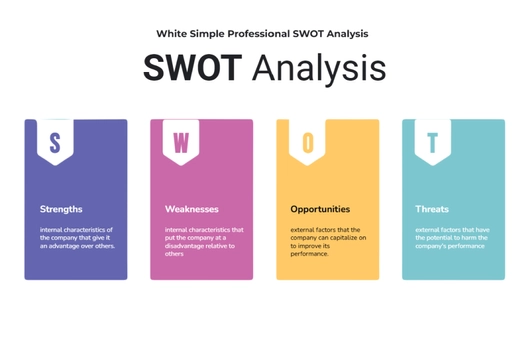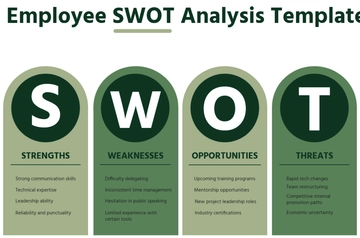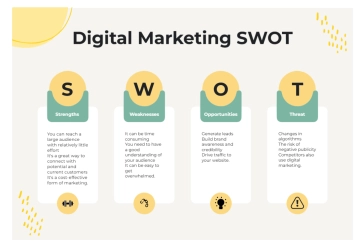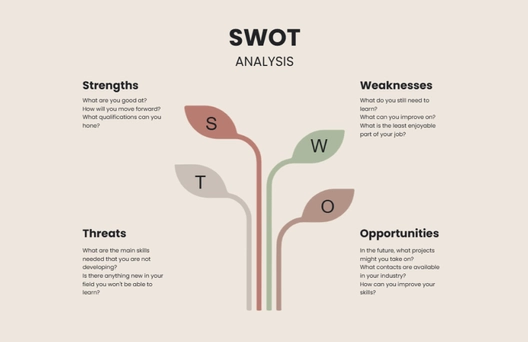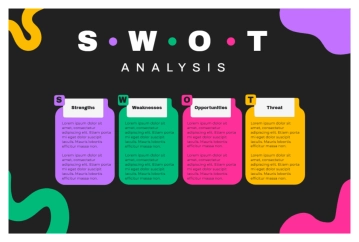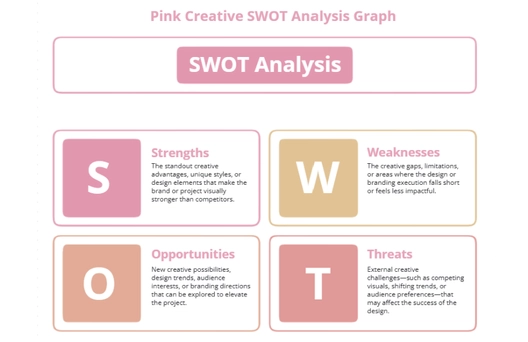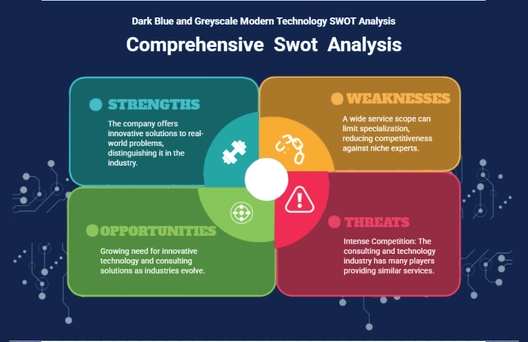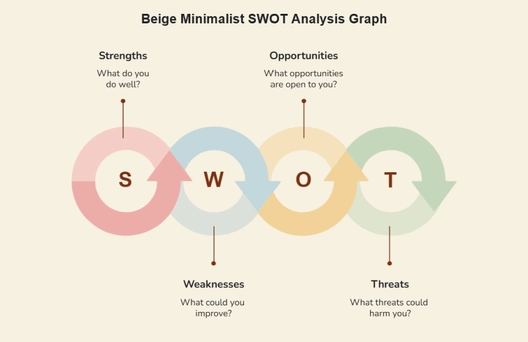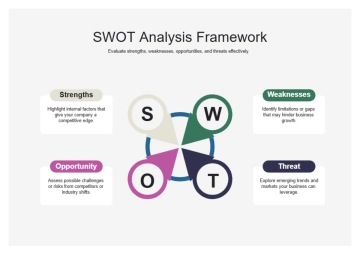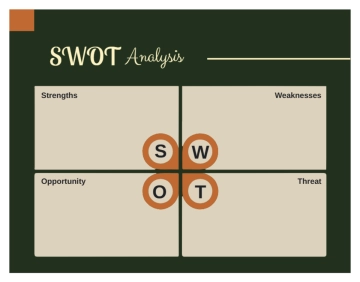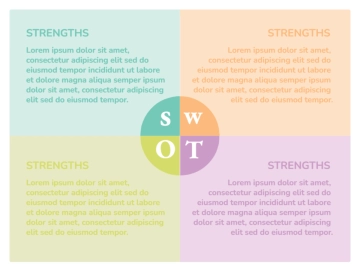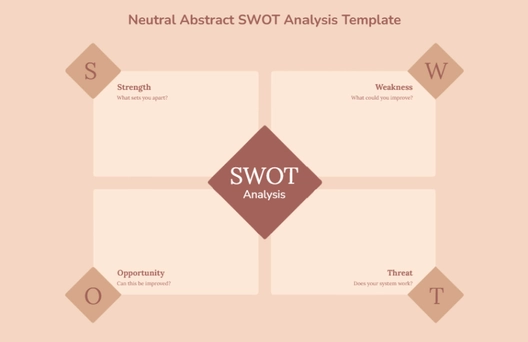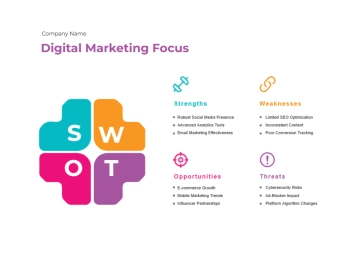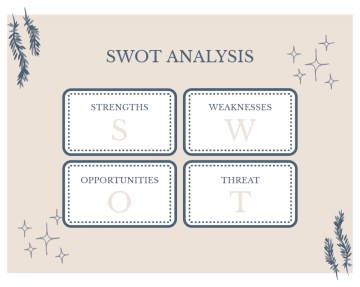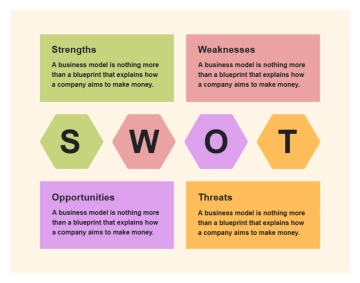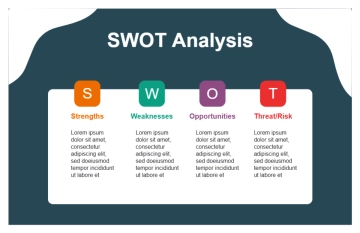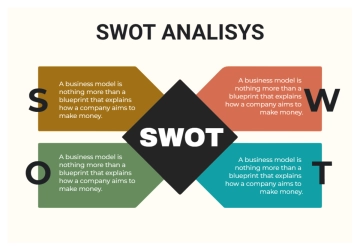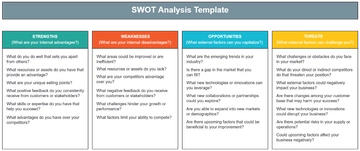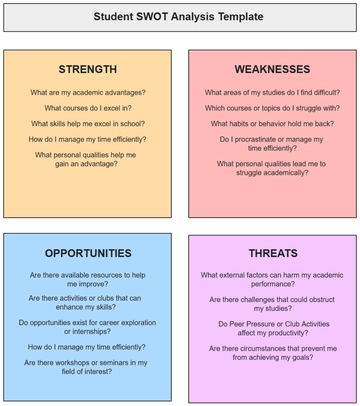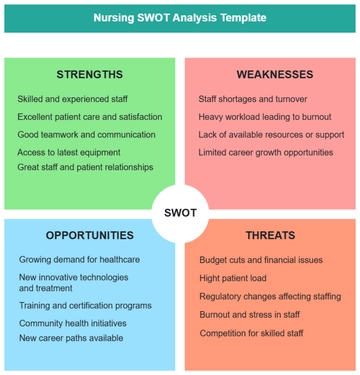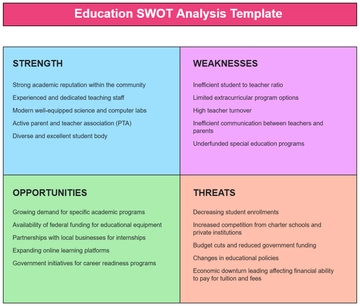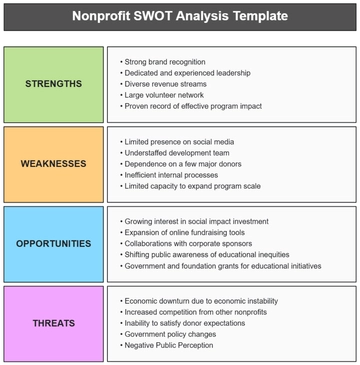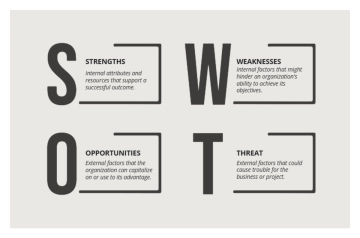Free Workplace Incident SWOT Analysis
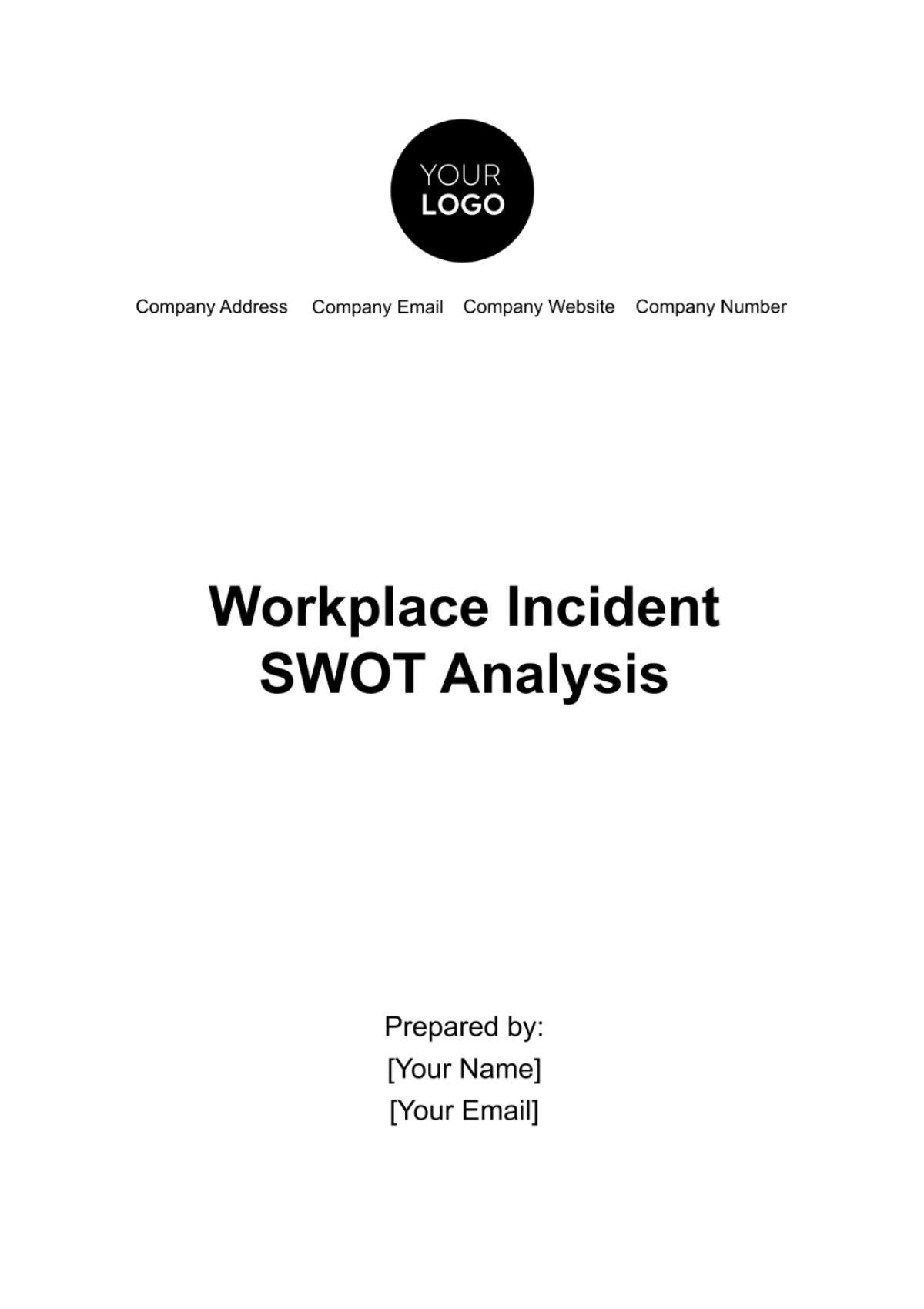
1. Introduction
This SWOT (Strengths, Weaknesses, Opportunities, and Threats) Analysis template is meticulously designed to guide [Your Company Name] in effectively managing workplace incidents. It aims to provide an in-depth and structured approach for evaluating our company's current capabilities and preparedness in dealing with various workplace incidents. The core purpose of this document is to thoroughly assess the internal and external factors that influence our incident management processes.
By identifying our strengths, we can leverage these advantages to enhance our incident response effectiveness. Recognizing our weaknesses allows us to develop targeted strategies to address and mitigate these shortcomings. The analysis of opportunities guides us in exploring external factors and trends that can be harnessed to improve our incident management strategies. Conversely, understanding potential threats enables us to prepare for and mitigate external challenges that may impact our workplace.
Ultimately, this SWOT Analysis serves not only as a tool for assessment but also as a strategic framework for continual improvement. It is designed to foster a proactive culture in incident management, ensuring that [Your Company Name] remains resilient and responsive in the face of workplace challenges. Regular updates and revisions of this document are essential to maintain its relevance and effectiveness in our ever-evolving work environment.
2. Strategic Implementation and Review
Before concluding this SWOT analysis, it is vital to discuss the strategic implementation and periodic review of the insights gained. This section aims to translate the findings of the SWOT analysis into actionable strategies and ensure a regular review process to adapt to changing circumstances.
2.1. Strategic Implementation
Implementing the insights gained from this SWOT analysis involves a series of steps that [Your Company Name] must undertake to fortify our incident management capabilities:
Action Plans for Strengths: Utilize our strengths by integrating advanced technologies and reinforcing our incident response team with ongoing training and resources.
Mitigation Strategies for Weaknesses: Address our weaknesses by allocating necessary resources, standardizing documentation procedures, and enhancing employee training programs.
Capitalizing on Opportunities: Seize opportunities by fostering partnerships, embracing technological advancements, and engaging employees in safety programs.
Risk Management for Threats: Develop comprehensive risk management strategies to mitigate external risks, legal implications, and other threats, including cybersecurity measures and adapting to economic fluctuations.
2.2. Periodic Review and Adaptation
Continuous improvement is key to effective incident management. Therefore, a periodic review of this SWOT analysis is essential:
Regular Updates: Review and update the SWOT analysis semi-annually or annually to ensure it remains relevant to current conditions and industry standards.
Feedback Mechanisms: Establish feedback channels for employees and stakeholders to contribute insights, which can be incorporated into future SWOT analyses.
Adaptation to Changes: Be agile in adapting to new threats or opportunities arising from changes in the external environment, such as regulatory shifts or technological advancements.
Performance Tracking: Monitor the effectiveness of implemented strategies and make necessary adjustments to ensure continuous improvement in incident management.
Incorporating these steps into our strategic planning will ensure that the insights gained from this SWOT analysis are effectively translated into action. By regularly revisiting and updating our analysis, [Your Company Name] will be well-equipped to handle workplace incidents with resilience and efficiency, safeguarding our employees and operations.
3. SWOT Analysis
The strengths section of the SWOT analysis for [Your Company Name] focuses on the internal attributes that positively impact our ability to manage workplace incidents effectively. These strengths are inherent advantages that our company possesses, which can be leveraged to enhance our response to various workplace challenges. They form the foundation upon which our incident management strategies are built and are critical in ensuring a swift and efficient response to any situation that arises. Below is a detailed examination of our key strengths:
3.1. Strengths
Aspect | Details |
Incident Response Team | Our response team comprises highly qualified and extensively trained personnel, who are always prepared for immediate action. Their expertise covers a broad range of incident types, ensuring competent handling of any situation. |
Policies & Procedures | We have well-established guidelines and protocols for managing different types of incidents. These policies are regularly reviewed and updated to align with current best practices and legal requirements, ensuring a standardized and effective approach to incident management. |
Training Programs | Our staff undergo regular and comprehensive training sessions focusing on workplace safety and incident management. These programs are designed to keep them informed about the latest safety protocols and response techniques, thereby enhancing their preparedness and competence. |
Communication Channels | We maintain robust and efficient internal and external communication mechanisms. These channels ensure clear, timely, and accurate dissemination of information during incidents, facilitating coordination among teams and with external partners such as emergency services and stakeholders. |
Technology Integration | Advanced technology systems are integrated into our incident management protocols. This includes incident reporting software, real-time monitoring tools, and emergency alert systems, enhancing our capability to quickly identify and respond to incidents. |
Supportive Work Culture | A culture that prioritizes safety and encourages open communication about potential hazards and incidents. This proactive approach helps in early identification and resolution of issues, further strengthening our incident management capacity. |
These strengths provide [Your Company Name] with a solid foundation for managing workplace incidents effectively, ensuring the safety and well-being of our employees and the continuity of our operations.
3.2. Weaknesses
In this section, we identify and analyze the internal factors at [Your Company Name] that could potentially hinder our effectiveness in managing workplace incidents. Recognizing these weaknesses is crucial for developing strategies to address them and enhance our overall incident response capability. The following table provides a detailed breakdown of our identified weaknesses:
Aspect | Details |
Resource Limitations | We face challenges due to inadequate resources, such as insufficient equipment or limited funds, which can impede our ability to handle large-scale incidents effectively. This limitation affects not only our immediate response capabilities but also our long-term resilience and recovery efforts. |
Documentation | Our current practices in documenting incidents are inconsistent, leading to gaps in information and potentially hindering post-incident analyses. Effective and uniform documentation is essential for learning from past incidents and improving future responses. |
Response Time | We experience delays in our response times, often due to logistical challenges or coordination issues among different teams. Timely response is critical in incident management, and delays can exacerbate the situation and its impacts. |
Employee Training & Awareness | While we have training programs in place, there is a need for more frequent and comprehensive training to ensure all employees are adequately prepared for emergency situations. Lack of awareness among staff can lead to improper handling of incidents. |
Technology Utilization | Our current use of technology in incident management is not fully optimized. This underutilization hinders efficient incident reporting, tracking, and resolution. |
Risk Assessment Procedures | There is a lack of thorough and regular risk assessment processes, which are essential for identifying potential hazards and preparing for various types of incidents proactively. |
By addressing these weaknesses, [Your Company Name] can significantly improve our readiness and effectiveness in managing workplace incidents. This involves not only allocating adequate resources and improving documentation practices but also enhancing employee training, optimizing technology use, and implementing regular risk assessments.
3.3. Opportunities
We explore external factors that [Your Company Name] can capitalize on to improve our incident management and workplace safety. These opportunities, if leveraged effectively, can significantly enhance our ability to respond to and manage workplace incidents. Here's a detailed expansion of the identified opportunities:
Aspect | Details |
Technological Advancements | The integration of cutting-edge technologies, such as AI-driven incident detection systems, mobile reporting apps, and real-time monitoring tools, can revolutionize our incident reporting and response strategies. These technologies offer faster, more accurate incident detection and analysis, leading to more efficient management. |
Partnerships | Building stronger collaborations with local authorities, emergency services, and other relevant organizations can enhance our response capabilities. These partnerships can provide access to additional resources, specialized expertise, and joint training exercises, improving overall preparedness and response strategies. |
Employee Engagement | Actively increasing employee participation in safety drills and feedback sessions can lead to a more safety-conscious workplace culture. Engaged employees are more likely to identify potential hazards and contribute to continuous safety improvements. |
Regulatory Compliance | Staying ahead of regulatory changes and aligning our practices accordingly can open up opportunities for increased safety standards and potential incentives. Compliance with the latest regulations not only minimizes legal risks but also positions us as a responsible and proactive organization. |
Community Outreach Programs | Engaging in community outreach and safety awareness programs can enhance our public image and build trust within the community. These programs can also provide valuable feedback and insights into public expectations regarding workplace safety. |
Training and Development | Investing in advanced training programs and development workshops for employees can foster a more knowledgeable and prepared workforce. This includes specialized training in incident management, emergency response, and first aid. |
By pursuing these opportunities, [Your Company Name] can significantly strengthen our incident management framework, making our workplace safer and more resilient to potential incidents. These initiatives will not only improve our internal processes but also enhance our reputation as a safety-conscious and innovative organization.
3.4 Threats
This section identifies the external threats that [Your Company Name] faces, which could impact our ability to manage workplace incidents effectively. Understanding these threats is essential for developing strategies to mitigate their potential impact. Below is an expanded view of the key threats:
Aspect | Details |
External Risks | Our operations are potentially vulnerable to various external risks such as natural disasters, local unrest, or other unforeseen events. These situations can disrupt our business continuity and pose significant challenges to our incident management capabilities. |
Legal Implications | Mishandling of incidents can lead to serious legal consequences, including fines, penalties, and lawsuits. Non-compliance with regulatory standards and inadequate response measures can escalate these legal risks, impacting our financial stability and business operations. |
Reputation Damage | Ineffective incident management can severely tarnish our company's reputation. Negative publicity, especially in the era of social media, can spread quickly, causing long-term damage to our brand and eroding trust among customers, investors, and the public. |
Cybersecurity Threats | As we increasingly rely on digital systems for incident management, the risk of cybersecurity breaches grows. Such threats can compromise sensitive data, disrupt communication channels, and hinder our response efforts. |
Economic Fluctuations | Economic downturns or market instability can lead to budget cuts and resource limitations, affecting our ability to invest in necessary safety measures and incident management resources. |
Changing Regulatory Environment | The regulatory landscape is constantly evolving. Keeping up with these changes can be challenging, and failure to adapt can expose us to increased legal and operational risks. |
By identifying and understanding these threats, [Your Company Name] can take proactive steps to strengthen our resilience against external challenges and safeguard our business continuity. This includes developing contingency plans, enhancing cybersecurity measures, staying informed about regulatory changes, and maintaining a strong focus on reputation management.
4. Conclusion
This comprehensive SWOT analysis provides [Your Company Name] with a strategic framework to evaluate and enhance our workplace incident management approach. The analysis underscores the importance of leveraging our strengths, addressing our weaknesses, seizing opportunities, and mitigating threats. Regular updates and strategic implementation of this analysis are crucial for continuous improvement in our incident response strategies, ensuring that we remain prepared, resilient, and responsive in the face of workplace challenges.
- 100% Customizable, free editor
- Access 1 Million+ Templates, photo’s & graphics
- Download or share as a template
- Click and replace photos, graphics, text, backgrounds
- Resize, crop, AI write & more
- Access advanced editor
Introducing Template.net's Workplace Incident SWOT Analysis Template, a strategic tool for assessing workplace incidents. Fully customizable and editable with our Ai Editor Tool, this template enables businesses to analyze strengths, weaknesses, opportunities, and threats related to incidents. Enhance safety protocols, mitigate risks, and improve incident response strategies effortlessly. Simplify incident management and bolster workplace safety with our intuitive platform.
